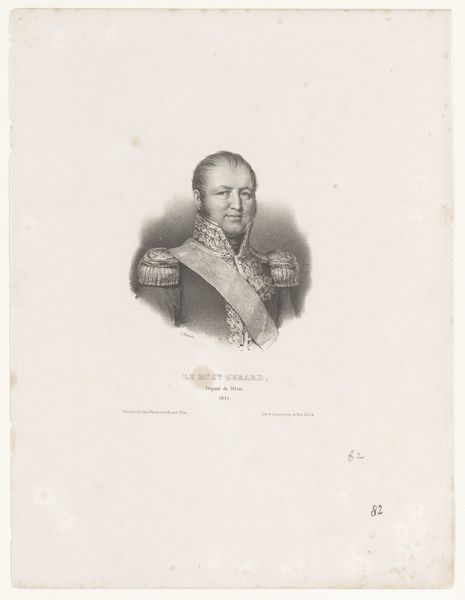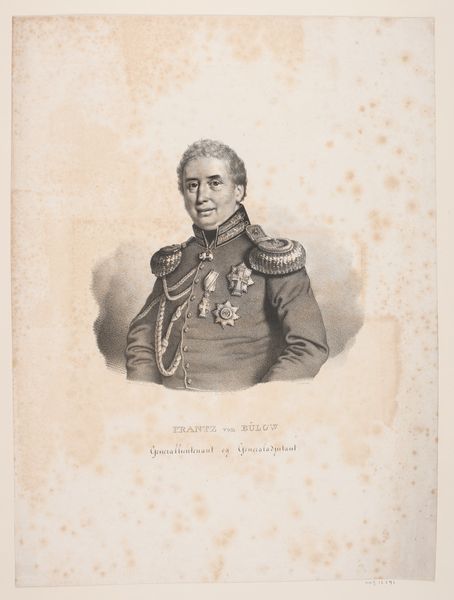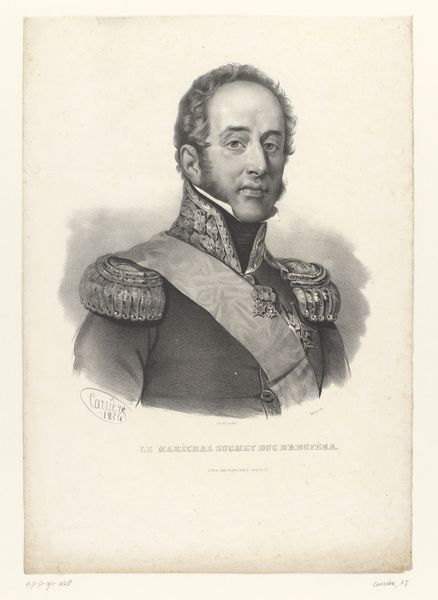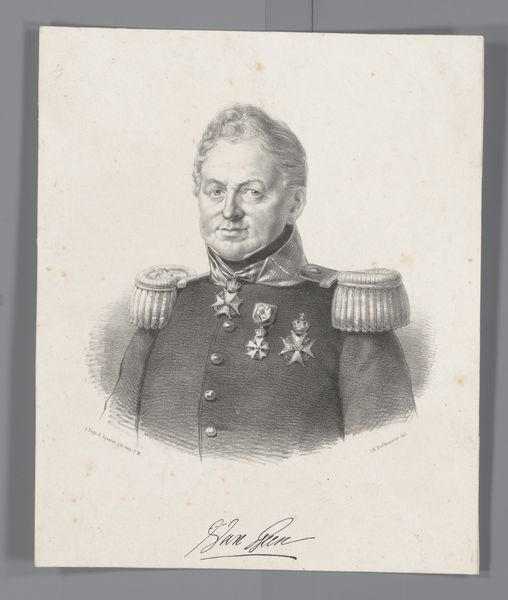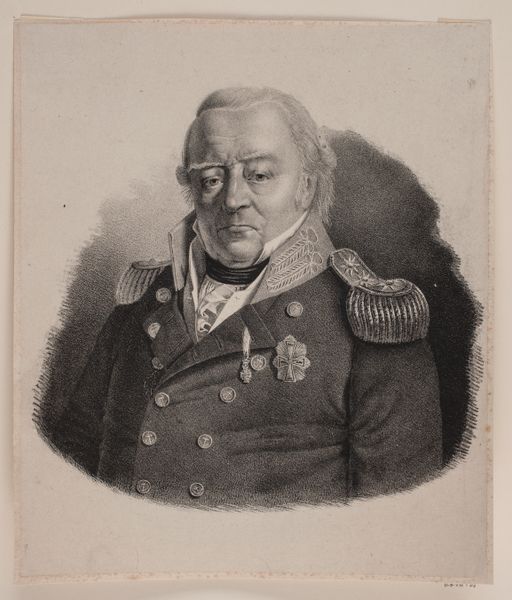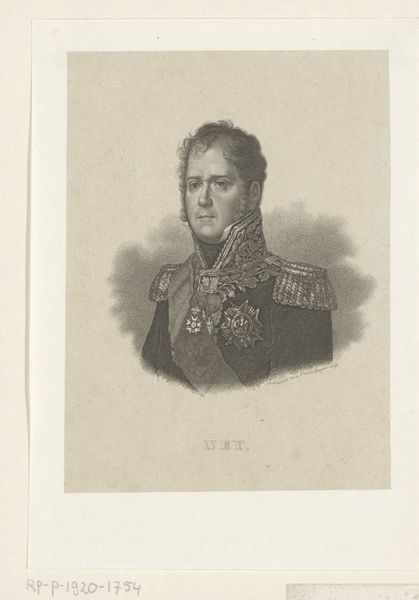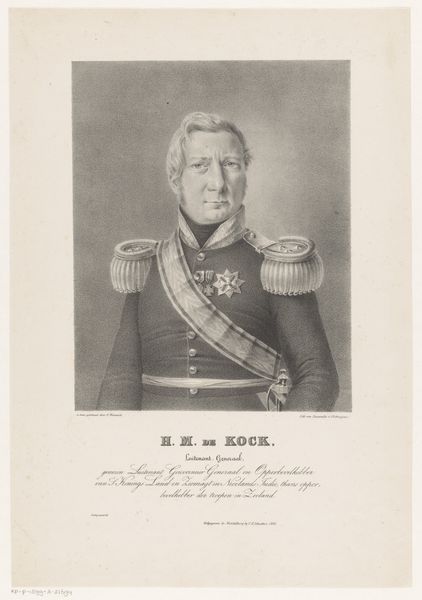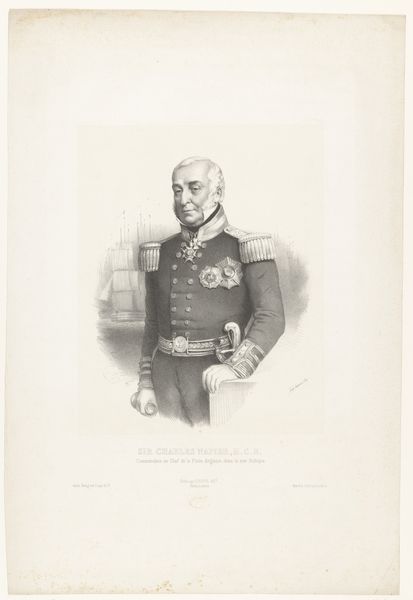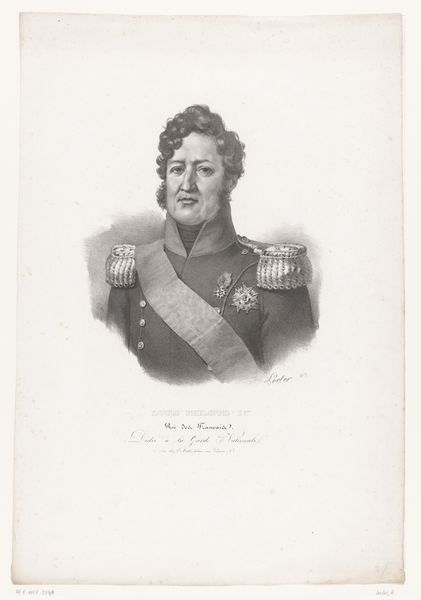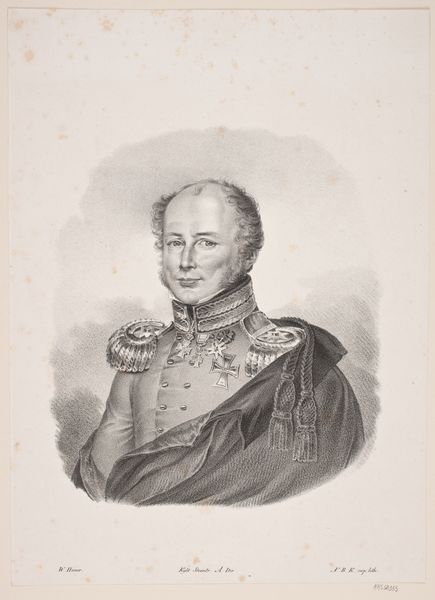
lithograph, print
#
lithograph
# print
#
portrait drawing
#
history-painting
#
realism
Dimensions: 450 mm (height) x 303 mm (width) (bladmaal)
Editor: Here we have a lithograph print of J.H. Hegermann-Lindencrone, made sometime between 1809 and 1875. The figure is very formal, his gaze intense. What can you tell me about this portrait in relation to its historical context? Curator: Well, immediately, this lithograph speaks to the democratization of portraiture during the 19th century. Before these printing techniques, portraiture was largely reserved for the elite, but works like these were more widely available. Notice his uniform, the crisp details rendered through lithography suggest the subject's high rank, his connection to the socio-political power of the time. Have you thought about how the accessibility of the print might influence its public reception? Editor: That's fascinating. I hadn't considered how the medium itself played a role in disseminating this image to a wider audience, shaping public perception. So, this portrait functions as a form of public image management? Curator: Precisely! Think of it as carefully crafted propaganda, designed to project power and authority in a rapidly changing political landscape. The rise of nationalism meant needing these figures visible to bolster social and military confidence. Editor: This has given me a new understanding of not just the subject, but also the political forces at play during the artwork’s time. Curator: Exactly! Examining art through the lens of history offers fascinating insights. It’s much more than just the art piece. It’s what society wanted it to portray.
Comments
No comments
Be the first to comment and join the conversation on the ultimate creative platform.
